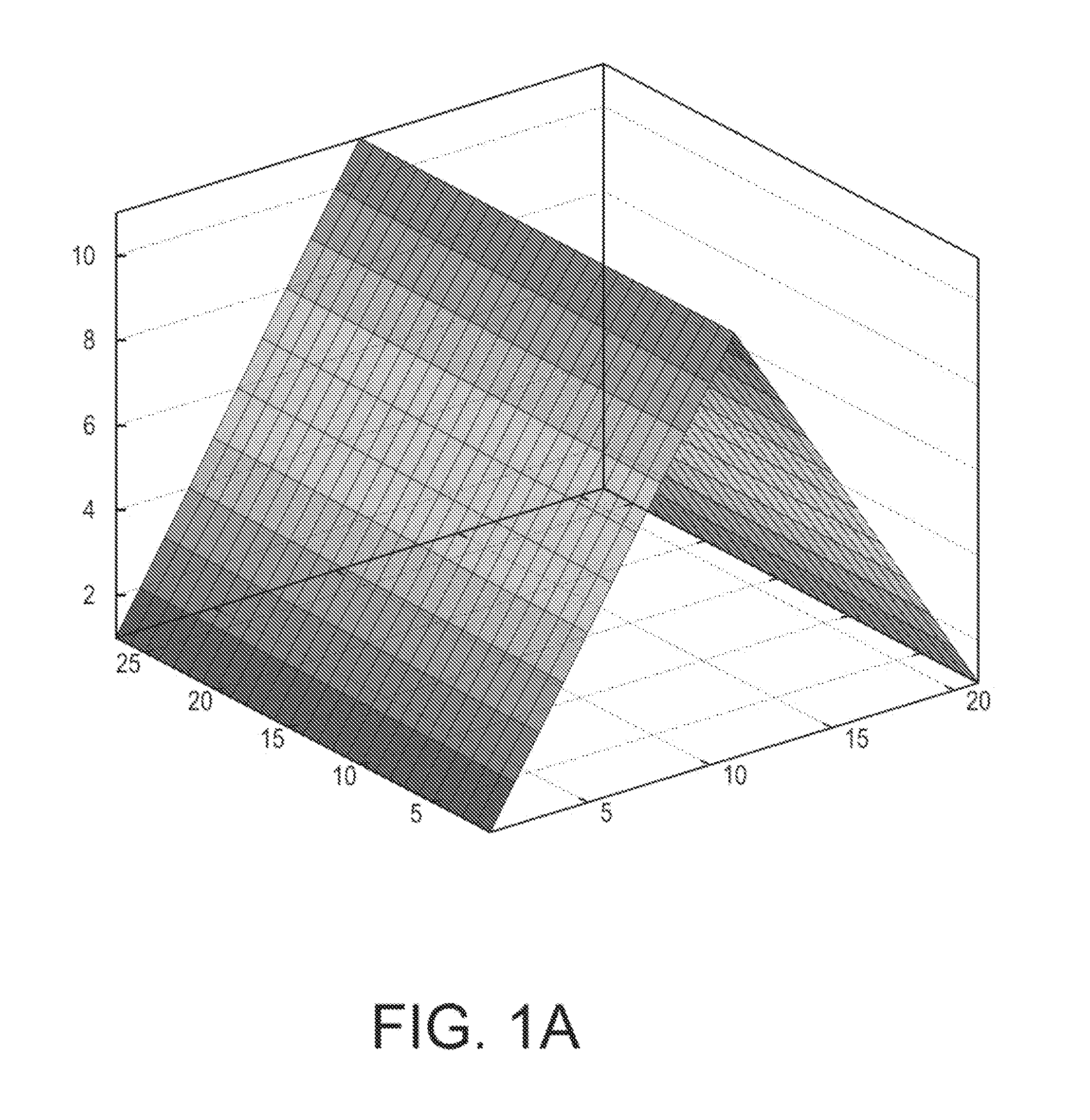Method for filtering data with symmetric weighted integral images
a symmetric weighted integral and data filtering technology, applied in image enhancement, instruments, computing, etc., can solve the problems of limited application of repeated integration methods, large large number of integral images, so as to reduce the number of memory accesses, reduce computational complexity, and reduce the effect of complexity
- Summary
- Abstract
- Description
- Claims
- Application Information
AI Technical Summary
Benefits of technology
Problems solved by technology
Method used
Image
Examples
example 3
Application of the SWII Method with a Pyramid-Shaped Kernel
[0037]In order to filter with a pyramid-shaped kernel (see FIG. 1(b)), it is possible to add up the previous triangle kernel in x and y directions with only C(20,19,0). As it can be deduced, other kernels can be built by translating, overlapping, and adding increasing or decreasing slopes.
[0038]In a filtering process there should be no offset added to the result. Therefore, the sum of all the weights in a kernel should be 1. In order to normalise the kernels built with SWII, the following equality can be used
∑i=1ni=n(n+1) / 2
[0039]As an example, the normalisation factor for the kernel shown in FIG. 1(a) would be M·N·(N+1) / 2. In the later example of the pyramid shape, the normalisation would be
M⌈N2⌉(⌈N2⌉+1) / 2+M⌊N2⌋(⌊N2⌋+1) / 2+N⌈M2⌉(⌈M2⌉+1) / 2+N⌊M2⌋(⌊M2⌋+1) / 2
example 1
Comparison Between SWII and Kernel Integral Images Using Reshuffling Method with a Pyramid-Shaped Kernel and Standard Convolution
[0041]A comparison is performed for the kernel shape shown in FIG. 1(b) pyramid filtering with standard convolution, using the Reshuffling method (reference [9]), Kernel Integral Images (KII) (reference [4]) and SWII. The unnormalised kernel k(x,y) have performed where (x,y)ε[1,N]×[1, M] can be expressed mathematically as follows
k(x,y)=⌊N2⌋-x-⌊N2⌋+⌊M2⌋-y-⌊M2⌋
[0042]The elements of this kernel would be pre-computed for a given N and M. With such prior information stored, filtering would need C(2·N·M+1,N·M−1,N·M).
[0043]Filtering with Reshuffling demands the pre-computation of the links and weights. This offline procedure is independent of the size of the image and is here considered negligible. The number of redundant coefficients is
U=⌊N2⌋-⌊M2⌋-1.
According to reference [9] the complexity per output sample is C(2·N·M+1,N·M,U). Filtering with such a kernel usi...
example 2
Use of Gaussian Derivatives for the Purpose of Salient Point Detection
[0050]This section is devoted to validate the applicability of the proposed method to build kernels that are used in computer vision algorithms. More precisely, taking the example of Gaussian derivatives for the purpose of salient point detection (reference [5]). In our evaluation, the approximation of the second derivative in x taken in Bay (reference [1]) using integral images, is compared to the approximation taken using SWII. Note that N=M in the remaining of this section. Our approximation is based on the combination of several partially overlapping weighted slopes. The approximation in the x direction for the range xε[1,N] is depicted graphically in FIG. 4.
[0051]A triangle (see FIG. 1(a)) in the range
y∈[⌈N2⌉-N3+1,⌊N2⌋+N3]
is added to build the desired shape. Note that weights are chosen so that the sum of all samples is ≅0. FIG. 5 shows the second derivative of a Gaussian kernel in the x axis, and the corresp...
PUM
 Login to View More
Login to View More Abstract
Description
Claims
Application Information
 Login to View More
Login to View More - R&D
- Intellectual Property
- Life Sciences
- Materials
- Tech Scout
- Unparalleled Data Quality
- Higher Quality Content
- 60% Fewer Hallucinations
Browse by: Latest US Patents, China's latest patents, Technical Efficacy Thesaurus, Application Domain, Technology Topic, Popular Technical Reports.
© 2025 PatSnap. All rights reserved.Legal|Privacy policy|Modern Slavery Act Transparency Statement|Sitemap|About US| Contact US: help@patsnap.com



